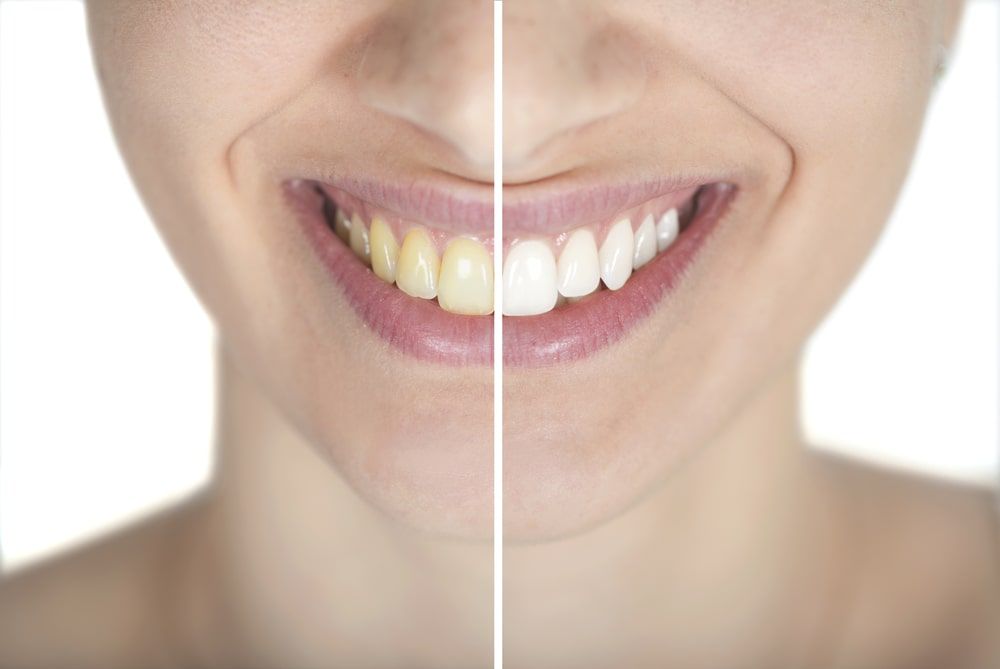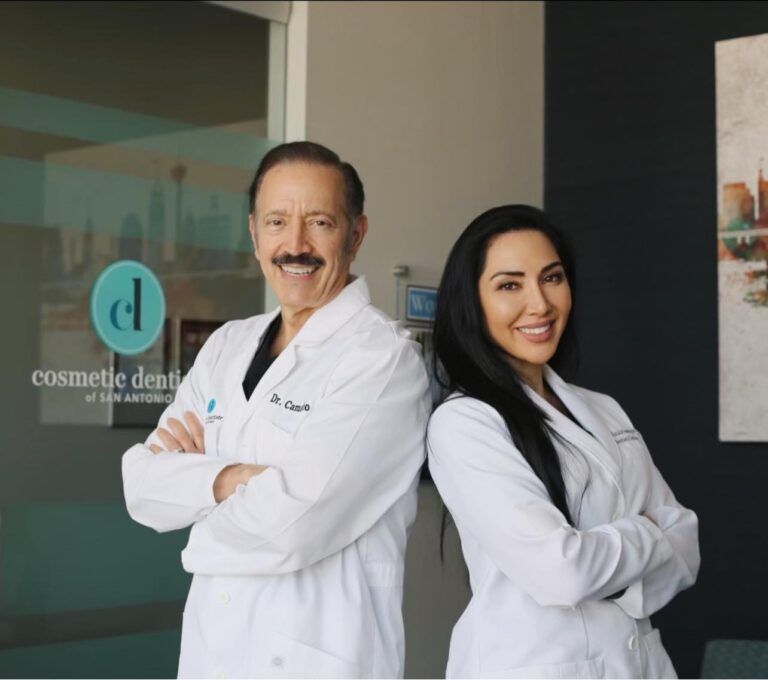A bright, radiant smile is often associated with health, confidence, and beauty, making teeth whitening one of the most sought-after cosmetic dental procedures today. Despite its popularity, many people remain curious about how teeth whitening works and the science that makes it possible. Understanding the underlying mechanisms can help you make informed decisions and achieve the best results. In this blog, we will delve into the causes of tooth discoloration, explore various whitening methods, and uncover the science behind the dazzling transformations that teeth whitening can bring.
In This Blog:
- What Causes Teeth to Discolor?
- Types of Teeth Whitening Methods
- The Science Behind Whitening Agents
- Innovations in Teeth Whitening
What Causes Teeth to Discolor?
Teeth discoloration is a common concern that can affect anyone, regardless of age. Various factors contribute to the change in tooth color, and understanding these can help in choosing the most effective whitening method.
Natural Aging Process
As we age, the enamel on our teeth naturally wears down, revealing the yellowish dentin beneath. This process is gradual but inevitable, leading to a duller and less vibrant smile over time.
Dietary Factors
Certain foods and beverages are notorious for staining teeth. Coffee, tea, red wine, and dark-colored fruits like berries contain chromogens—highly pigmented molecules that adhere to the enamel. Acidic foods and drinks can also erode enamel, making teeth more susceptible to staining.
Smoking and Tobacco Use
Nicotine and tar in tobacco products are significant culprits behind stained teeth. These substances can create stubborn yellow or brown stains that penetrate the enamel and are challenging to remove with regular brushing.
Medications and Medical Conditions
Certain medications, such as tetracycline antibiotics, can cause intrinsic stains if taken during tooth development. Additionally, treatments like chemotherapy and radiation can lead to tooth discoloration. Medical conditions, such as dentinogenesis imperfecta, also contribute to changes in tooth color.
Poor Dental Hygiene
Inadequate brushing and flossing can lead to plaque and tartar buildup, which can cause teeth to appear yellow or brown. Regular dental hygiene practices are essential to prevent surface stains and maintain a bright smile.
Understanding these causes of teeth discoloration can help you take preventive measures and select the most appropriate whitening method to restore your teeth to their natural brilliance.
Types of Teeth Whitening Methods
Teeth whitening has evolved significantly over the years, offering various options to suit different needs and preferences. Understanding the available methods can help you choose the most effective and convenient one for your lifestyle.
In-Office Whitening
In-office whitening is performed by dental professionals using high-concentration bleaching agents. The procedure typically involves protecting the gums and applying a whitening gel to the teeth. A special light or laser may be used to enhance the whitening process.
In-office treatments offer the fastest and most noticeable results, often lightening teeth by several shades in a single visit. The controlled environment ensures safety and minimizes the risk of sensitivity or gum irritation.
At-Home Whitening Kits
At-home whitening kits include products such as whitening trays, strips, and pens. These kits contain lower concentrations of bleaching agents compared to professional treatments, making them safe for home use.
At-home kits are convenient and cost-effective, allowing you to whiten your teeth in the comfort of your home. However, the results are usually less dramatic and take longer to achieve compared to in-office treatments. There is also a higher risk of uneven application and sensitivity if not used correctly.
Natural Remedies
Natural remedies, such as baking soda, activated charcoal, and oil pulling, are popular for their purported whitening effects. These methods are often seen as safer and more natural alternatives to chemical whitening.
While natural remedies can help remove surface stains, their effectiveness is generally limited compared to professional and over-the-counter products. Additionally, some natural methods, like using lemon juice or baking soda, can be abrasive and damage the enamel if used excessively.
Choosing the right teeth whitening method depends on your specific needs, budget, and the level of whitening desired. Consulting with a dental professional can help you determine the most suitable option for achieving a brighter, whiter smile.
The Science Behind Whitening Agents
Teeth whitening relies on specific chemical agents that break down stains and discoloration. Understanding these agents and their mechanisms can help you appreciate how teeth whitening works and what to expect from the process.
Hydrogen Peroxide and Carbamide Peroxide
The most common whitening agents are hydrogen peroxide and carbamide peroxide. Hydrogen peroxide (H2O2) is a powerful bleaching agent that breaks down into water and oxygen. Carbamide peroxide is a compound of hydrogen peroxide and urea, which also releases hydrogen peroxide when it breaks down. When applied to the teeth, these agents penetrate the enamel and reach the dentin, where they break apart the complex molecules that cause discoloration.
Comparison of Effectiveness and Usage:
Hydrogen peroxide works quickly and is often used in professional whitening treatments due to its high potency. Carbamide peroxide releases hydrogen peroxide more slowly, making it suitable for at-home whitening kits where a gentler approach is beneficial. Both agents are effective, but their concentration and application method determine the speed and extent of the whitening process.
Mechanism of Action:
The active ingredients in whitening agents are small enough to pass through the enamel’s porous structure and reach the dentin layer underneath. The dentin is where most deep stains reside, making this penetration crucial for effective whitening.
Once inside the tooth, the bleaching agents react with the colored molecules (chromogens) that cause stains. This reaction, known as oxidation, breaks down the chromogens into smaller, less pigmented molecules, effectively lightening the color of the teeth. The result is a noticeable reduction in stains and a brighter smile.
Understanding the science behind these whitening agents highlights the importance of choosing the right product and following professional guidance for optimal and safe results. The effectiveness of teeth whitening largely depends on the type and concentration of the whitening agent used, as well as the application method.
Innovations in Teeth Whitening
The field of teeth whitening has seen significant advancements in recent years, with new technologies and products enhancing the effectiveness, convenience, and safety of whitening treatments. Understanding these innovations can help you make informed choices about the latest options available.
LED Light-Activated Systems:
One of the most notable innovations in teeth whitening is the use of LED light-activated systems. These systems use a special light to accelerate the whitening process. The LED light enhances the effectiveness of the whitening gel, allowing for quicker and more dramatic results. This technology is commonly used in professional in-office treatments but is also available in some high-end at-home kits.
Whitening Toothpastes and Rinses:
Whitening toothpastes and rinses have become increasingly popular for their convenience and ease of use. These products contain mild abrasives and low concentrations of bleaching agents to help remove surface stains and prevent new ones from forming. While they are not as powerful as professional treatments, they can be an effective supplement to maintain whitening results.
Research on New Whitening Agents:
Ongoing research aims to develop new whitening agents that are more effective and less likely to cause sensitivity. Scientists are exploring alternative compounds and formulations that can provide the same or better results with reduced side effects. Innovations in nano-technology, for example, may lead to more targeted and efficient whitening solutions.
Advances in Whitening Techniques:
Future trends in teeth whitening also include the development of more sophisticated application techniques. These advances aim to improve the precision and uniformity of whitening treatments, ensuring consistent results across all teeth. Custom-fitted trays and advanced delivery systems are being refined to enhance the overall whitening experience.
The continuous evolution of teeth whitening technologies and methods promises to provide safer, more effective, and more convenient options for achieving a brighter smile. Staying informed about these innovations can help you choose the best approach for your teeth whitening needs, ensuring optimal results with minimal discomfort.
Conclusion
Achieving a brighter, whiter smile is now more accessible than ever, thanks to the advancements in teeth whitening technologies and methods. Understanding the causes of tooth discoloration and the science behind various whitening agents can help you make informed decisions about the best approach for your needs. Whether you opt for professional in-office treatments, at-home kits, or natural remedies, knowing what to expect and how to maintain your results is key to a lasting, radiant smile. As always, consulting with a dental professional can provide personalized advice and ensure that your whitening journey is both safe and effective. Embrace the science behind teeth whitening and unlock the potential for a more confident and dazzling smile.
Dr. Edward Camacho earned his DDS from the University of Texas Health Science Center. He believes in continuing his education and training and that a dentist’s education should never cease. As a result, he has received extensive training in aesthetic dentistry, restorative dentistry, dental implant placement, orthodontics, computerized dentistry, and laser dentistry. Dr. Camacho’s continued education and completed cosmetic procedures has helped him establish himself as one of San Antonio’s leading cosmetic dentists. He has completed thousands of cosmetic procedures over the span of his 40 year career.







